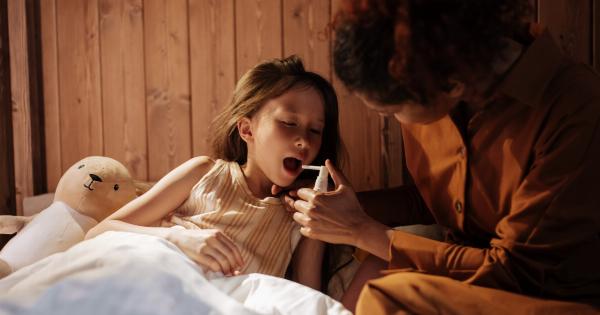Streptococcal pharyngitis, commonly known as strep throat, is a bacterial infection that affects the throat and tonsils. It is caused by the streptococcus bacteria and can cause discomfort and pain, especially during swallowing.
This comprehensive guide aims to provide detailed information about streptococcal pharyngitis, including its causes, symptoms, diagnosis, treatment, and prevention.
Causes of Streptococcal Pharyngitis
Streptococcal pharyngitis is primarily caused by the group A streptococcus bacteria, specifically Streptococcus pyogenes.
This bacteria is highly contagious and can be transmitted through respiratory droplets when an infected person coughs, sneezes, or talks. It can also spread through close contact with an infected person or by touching surfaces or objects contaminated with the bacteria.
Symptoms of Streptococcal Pharyngitis
The symptoms of streptococcal pharyngitis can vary from person to person, but some common signs and symptoms include:.
- Sore throat
- Difficulty swallowing
- Red and swollen tonsils
- White patches or pus on the tonsils
- Fever
- Tender and swollen lymph nodes in the neck
- Headache
- Fatigue
- Loss of appetite
- Nausea
Diagnosis of Streptococcal Pharyngitis
To diagnose streptococcal pharyngitis, a healthcare professional will typically perform a physical examination and assess the symptoms. They may also use the following diagnostic methods:.
- Rapid antigen test: This involves swabbing the back of the throat to collect a sample. The sample is then tested for the presence of streptococcus bacteria.
- Throat culture: A swab sample is taken and sent to a laboratory for further testing. This method can provide more accurate results but may take longer to obtain the results.
Treatment for Streptococcal Pharyngitis
Streptococcal pharyngitis is typically treated with antibiotics to combat the bacterial infection. Commonly prescribed antibiotics include penicillin, amoxicillin, and erythromycin.
It is essential to complete the full course of antibiotics as prescribed by the healthcare professional, even if symptoms improve before completion.
In addition to antibiotics, over-the-counter pain relievers such as acetaminophen or ibuprofen can help alleviate throat pain and reduce fever. Gargling with warm saltwater or using throat lozenges may also provide temporary relief.
Preventing the Spread of Streptococcal Pharyngitis
To prevent the spread of streptococcal pharyngitis and reduce the risk of infection, follow these preventive measures:.
- Wash hands frequently with soap and water for at least 20 seconds, especially after coughing, sneezing, or caring for an infected individual.
- Avoid sharing personal items such as utensils, cups, or toothbrushes with infected individuals.
- Cover mouth and nose with a tissue or elbow when coughing or sneezing, and dispose of tissues properly.
- Regularly clean and disinfect frequently-touched surfaces and objects.
- Encourage vaccination against other respiratory infections such as influenza and pneumococcal disease, as these can increase susceptibility to streptococcal pharyngitis.
Complications of Streptococcal Pharyngitis
If left untreated, streptococcal pharyngitis can lead to various complications, including:.
- Rheumatic fever: An inflammatory condition that can affect the heart, joints, skin, and brain.
- Post-streptococcal glomerulonephritis: A kidney inflammation that can cause blood in urine, swelling, and high blood pressure.
- Sinusitis or ear infections: The bacteria can spread to the sinuses or ears, leading to infections in these areas.
- Abscess formation: Collection of pus in the tonsils or throat.
When to Seek Medical Attention
It is advisable to seek medical attention if you or your child experience severe symptoms such as difficulty breathing, severe pain, persistent high fever, or difficulty swallowing.
Prompt treatment can help prevent complications and ensure a faster recovery.
Conclusion
Streptococcal pharyngitis, or strep throat, is a common bacterial infection that primarily affects the throat and tonsils.
It is crucial to recognize the symptoms, seek proper diagnosis, and follow the recommended treatment to prevent complications and reduce the spread of the infection. By practicing good hygiene and taking preventive measures, we can minimize the risk of streptococcal pharyngitis and maintain overall well-being.



























